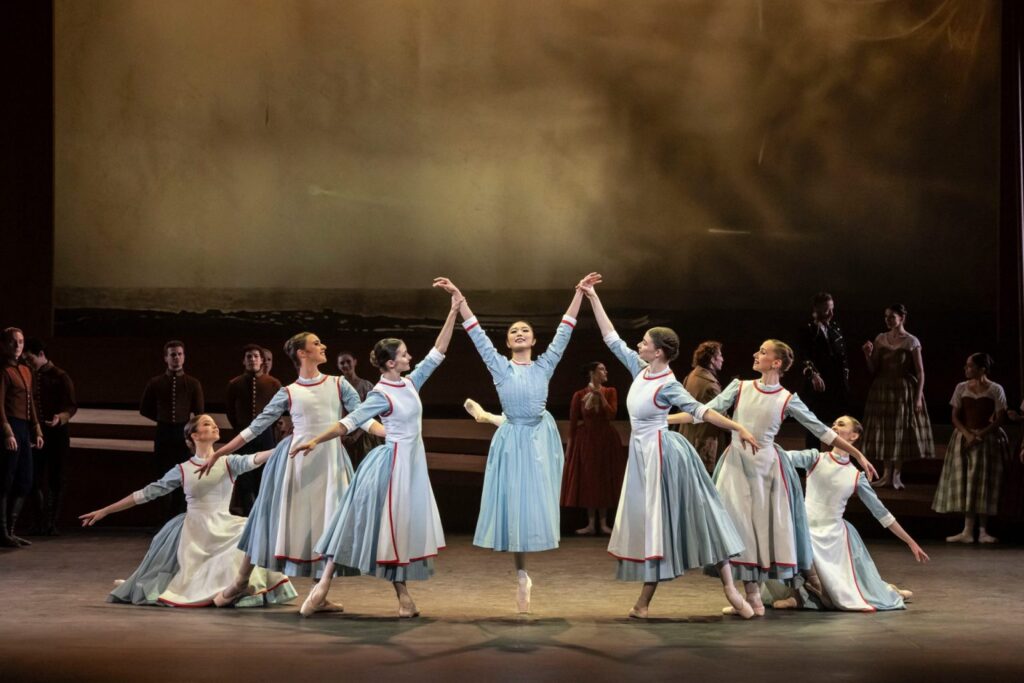Mayflower Southampton- until 3 December 2022
Reviewed by Lorna Hancock
5*****
Raymonda is a ballet in three acts, originally choreographed by Marius Petipa to music by Alexander Glazunov. It was first presented by The Imperial Ballet at The Imperial Mariinsky Theatre in St Petersburg in 1898. Unfortunately, with a slightly problematic plot set in the Crusades, at times being offensive, the original was never performed in full by any UK company. As Tamara Rojo bids farewell to the English National Ballet after ten years as Artistic Director, with her vision to reinvigorate the classical ballet repertoire, it was her belief that it was time to do something about that.
Rojo has magnificently reimagined the classic work for the 21st century. Now set in the Crimean War, adding a connection to British history, she has also made some changes to create a more compelling story with a modern heroine. She has still however presented as much as Petipa’s original choreography as possible. She has also added a new section, to pay tribute to fallen soldiers and nurses to reflect on their sacrifice in Crimea.
The first Act takes us from England to a camp outside Sevastopol. The cleverly choreographed scene makes it easy to believe that we are there with them preparing for battle. Soon the romantic dilemma between Raymonda (Fernanda Oliviera), handsome soldier John de Bryan (Francesco Gabriele Frola) to whom she becomes engaged and Abdur Rahman (Erik Woolhouse) a Prince and Agha from the Ottoman Army becomes apparent. The act concludes with an exquisite dream sequence where Raymonda is torn between the love of the two men. The choreography is mystical with mesmerising synchronisation, and the use of lamps give a nod to ‘The Lady with the Lamp’ Florence Nightingale, the inspiration for Raymonda’s character.
Act 2 transports us from the stricken war camp, to the Prince’s extravagant party. It was very interesting here to see different countries dance traditions fused with the classical ballet style. Turkish and Hungarian clapping and stomping, and I particularly loved the Flamenco fusion to the sound of castanets.
The final act contains the most famous part of Alexander Glazunov’s 1898 score. We are transported back to an English garden party for the wedding of Raymonda and John. As Ramonda appears, the company begin the most elegant synchronised pas de deux, that had to be my personal highlight of the show. The Prince then arrives at the scene, which leads Raymonda to conclude the show by facing the decision of her own destiny.
The principals all danced flawlessly, and it was a delight to the eyes to watch them perform their art. However, the stand out performers for me were Fernanda Oliveria as Raymonda and Precious Adams as Sister Clemence. Their beautiful lines, exquisite pointe technique and stretched out arabesques were absolutely charming to watch.
Although you would think this show would be all about the ballet, and I’m not saying it isn’t, this review could not possibly be complete without mentioning the astonishing music. Watching and listening to The English National Ballet’s Philharmonic 65 piece orchestra playing the score live in its entirety was astounding.
It was such a pleasure to be lucky enough to see one of ballets classics, charmingly reimagined into a beautiful modernised masterpiece.

